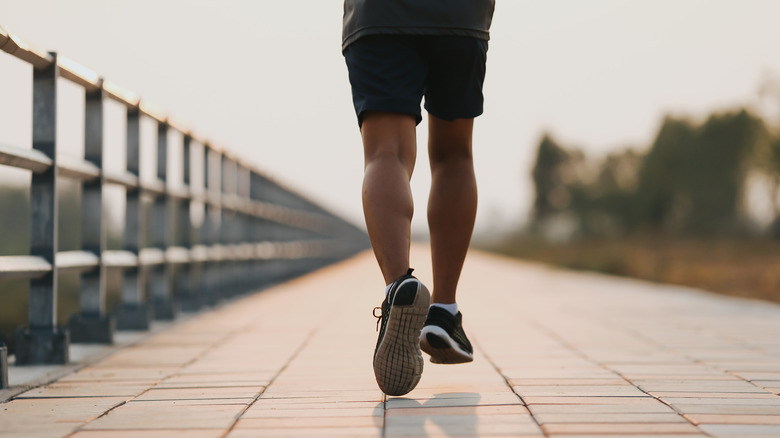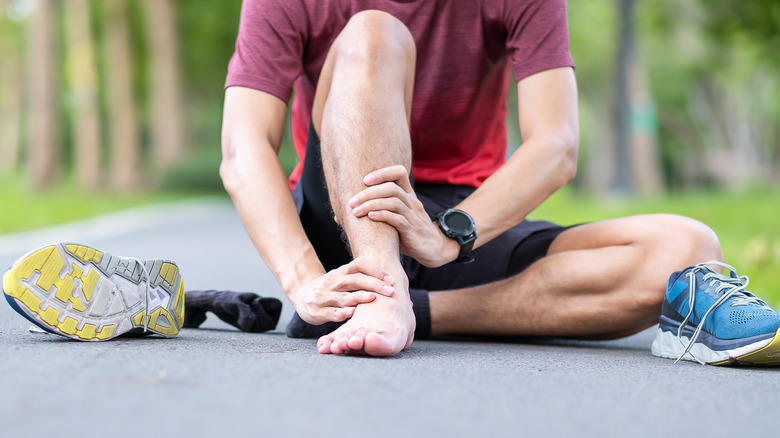How Running Regularly Affects Your Feet
Even with the variety of workout machines available, running is still one of the best cardio exercises out there. According to WebMD, running may cut the risk of dying from heart disease in half. Additionally, running for just 10 minutes per day can lower your chances of developing cardiovascular disease. It can also lower resting heart rate, an important factor in overall health. As if it couldn't get any better, running has been shown to improve sleep quality, leaving us more alert and restored upon waking. Additional running benefits include a triggered release of endorphins that help combat stress, better short and long-term memory, and fewer instances of illness due to a boosted immune system.
Running is such an effective workout because it works the entire musculoskeletal system (via Self). Over time, your bones, ligaments, and tendons adapt and become stronger. But does running only have positive effects? Unfortunately, there may be some drawbacks to this health-promoting sport due to wear and tear on the body.
Common foot conditions caused by running
Without a doubt, running is tough on your feet (via Healthline). And blisters are perhaps the most common problem for runners. Because ill-fitting shoes are usually the culprit, it's important to find ones that fit well. Running might also damage your toenails, especially if you run downhill. A more serious complication that can arise from running is plantar fasciitis, a condition in which the foot's fascia becomes inflamed and causes heel pain. Additionally, if the joints in your big toes become stiff, you may develop a painful condition called hallux rigidus. Those with arthritis in their big toe are at a greater risk of developing it.
It's critical to invest in a good pair of running shoes and perhaps custom-made orthotics if your feet are giving you trouble, according to Healthline. Always stretch before a run, and try to run on various surfaces to keep your feet in good health.


